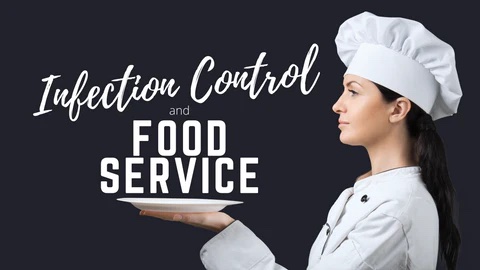
- In-Room Dining Procedures: How do you communicate menu options? How is resident preference monitored? Is resident information verified (diet, adaptive equipment, preferences)? Is food received at a palatable temperature?
- Isolation Rooms – Foodservice Communication and Delivery: How is communication coordinated between food ordering and delivery with nursing team? Utilize disposable serving materials that can thrown away in the isolation room.
- QAPI for Temperature Control: Quality Assurance – Performance Improvement: Ensure in-room dining meets minimum standards. Use this form to audit room trays.
- Dining Room Sanitation Procedures: Certain service styles of dining like buffet or self-service may not be appropriate during peak infection control periods. Consider implementing procedures for disinfecting dining tables.
- Cleaning, Sanitizing, and Disinfecting in the Kitchen: Follow established cleaning and sanitizing schedules. Establish additional procedures for disinfecting high-touch areas.
- Preventing Foodborne Illness: Ensure temperature control during storage, cooking, holding, and cooling. Avoid cross-contamination. Verify food handling procedures.
- Food Purchasing and Food Deliveries: Limit traffic into the operation by establishing procedures for food delivery.
- Employee Health Program: Employees should never work around food if they have fever, diarrhea, vomiting, or been diagnosed with a contagious illness.
- Handwashing and Glove Use: What is the handwashing procedure? What is the glove-use procedure (ready to eat foods)? Hand antiseptics are not a replacement for handwashing.
- Competency Standards for Foodservice Teams: Record all in-service education. Monitor competency (observation or testing).
Is your procedure manual more than 5 years old? Update yours today!
